The Curse of Oak Island- Season 8, Episode 6: Seaing is Believing
The following is a plot summary and analysis of Season 8, Episode 6 of the History Channel’s TV series The Curse of Oak Island.
[SPOILER ALERT!!!]
Plot Summary
The episode begins at the Money Pit area, where the men of Choice Drilling are busy carrying out the pattern drilling operation with which they have been tasked. Terry Matheson, Charles Barkhouse, and Rick Lagina inspect a 108-128-foot-deep core sample extracted from a borehole called H5.5 and find that it contains little aside from water, loose earth, and pieces of crushed granite which the treasure hunters used to backfill shafts in previous years. Terry Matheson explains that they should expect to find more interesting material below a depth of 175 feet, and that they hope to penetrate a void in the bedrock which begins at a depth of around 215-220 feet.
Later, the Fellowship of the Dig meets in the War Room to Skype with researchers Judi Rudebusch and Erin Helton, both of whom appeared in the previous episode. The narrator reminds us that, in the previous episode, Helton presented her theory regarding the location of the ‘anchor’ points suggested by Zena Halpern’s mysterious map of Oak Island, and that a follow-up investigation revealed the presence of large rocks at the points which Helton prescribed.

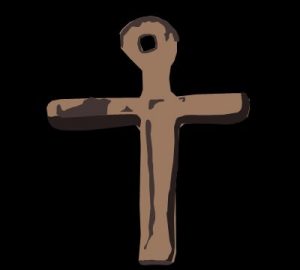
In this episode, we learn that the treasure hunters had previously sent Helton a 3D model of the lead cross which Rick Lagina and Gary Drayton found at Smith’s Cove back in Season 5, Episode 10. Helton used the model to print out a 3D plastic copy of the cross, which she then used to formulate an extension to the theory she outlined in the previous episode. She proceeds to show the treasure hunters the steps she took in formulating her new theory. First, the GIS expert lies the cross on a piece of translucent paper, places a ruler against the cross so that it touched the corners of its top and right crossbeam, and draws lines along the ruler extending away from the cross. She repeats this procedure with each of the cross’ four quadrants and traces the inside of the square hole at the cross’ top. That accomplished, she removes the cross from the paper and uses her pencil to connect each of the four broken lines she drew, forming a diamond shape with a hole near its upper vertex. Then she prints out a map of Oak Island bearing the anchor points she identified in the previous episode, scaled so that the distance between the anchor points is the same as the distance between the bottom and right vertices of the diamond she drew. She then takes the translucent paper on which she drew the diamond and aligns the diamond’s bottom and right vertices with the northeastern and southwestern anchor points, respectively. Finally, she draws the treasure hunters’ attention towards the position of the square hole she had drawn on the translucent paper and points out that it rests on the South Shore Cove due south of the Money Pit area, in the general vicinity of the bygone stone triangle.

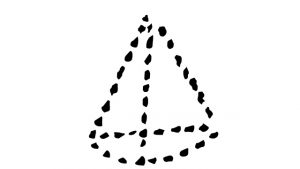 After Helton suggests that this point marks the precise location of the stone triangle, the narrator reminds us that said triangle was first discovered by Captain John Welling on behalf of the Oak Island Treasure Company in 1897, and that it was destroyed by Robert Dunfield in 1965. Rick Lagina thanks Helton for her work and expresses his desire to speak with her soon, implying that he is aware of more information which Helton will disclose to the rest of the team sometime in the future.
After Helton suggests that this point marks the precise location of the stone triangle, the narrator reminds us that said triangle was first discovered by Captain John Welling on behalf of the Oak Island Treasure Company in 1897, and that it was destroyed by Robert Dunfield in 1965. Rick Lagina thanks Helton for her work and expresses his desire to speak with her soon, implying that he is aware of more information which Helton will disclose to the rest of the team sometime in the future.
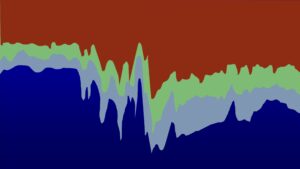
Later that morning, Rick Lagina and Dr. Ian Spooner head to the southeastern corner of Oak Island’s swamp, where Spooner’s sonar scan affirmed the presence of some sort of buried wall in Season 8, Episode 1. The treasure hunters disembark in a dingy and row over to the anomaly, where Spooner probes the swamp floor with a metal rod. The rod sinks two metres into the swamp during the first probe, and plunges to a depth of three metres during the second probe. During the third probe, the rod strikes what appears to be a flat rock resting 40 centimetres below the water’s surface. Spooner proceeds to find more rocks at the same depth, which appear to form a straight pattern. The geoscientists marks these rocks with wooden stakes, during which process he finds that one of them lies at the edge of what appears to be a three metre drop-off- perhaps the anomaly which his sonar scan picked up. “This was built with purpose,” he concludes.
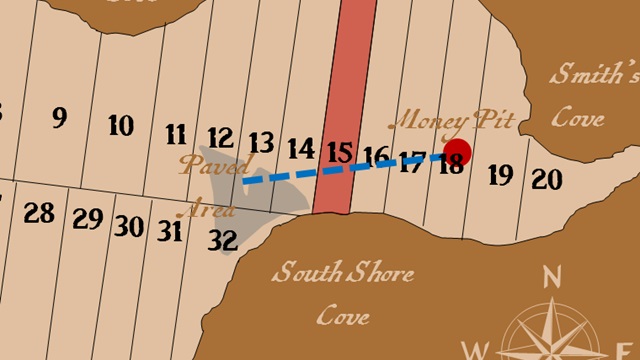
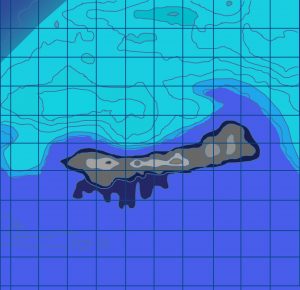
Rick observes that the stakes seem to form a line in the direction of the tar kiln on Lot 15, evoking Gary Drayton’s suggestion, proposed in Season 8, Episode 3, that an ox trail once connected the swamp’s Paved Area with the Lot 15 structure. The path-like area formed by these rocks is later revealed to be 20 feet wide and 70 feet long. After the treasure hunters agree that they ought to excavate these stones, the narrator attempts to connect the new discovery with the ‘Ship Anomaly’ indicated by the results of a seismic survey conducted in Season 6, which proved to be a length of unusually dry clay interspersed with caprock in Season 7, Episode 2, and not the site of a ship as initially hoped.
Rick Lagina and Dr. Spooner phone up Marty Lagina and inform him of their discovery. “Rick, how did we miss that when we drained the swamp two times?” Marty asks. The elder Lagina brother and the geoscientist reply that, since the rocks are covered by about 15 centimetres of detritus, they must have been invisible to the naked eye when the swamp was dry.
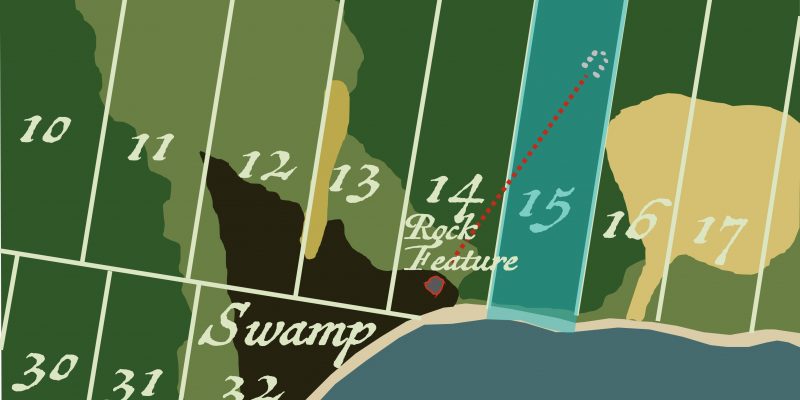
The next morning, the Fellowship of the Dig meets with Tony Sampson outside the Oak Island Interpretive Centre. Dr. Spooner shows the crew a map depicting Oak Island with a slightly elongated shoreline, as it is supposed to have appeared in the 1600s on account of lower sea levels. The narrator informs us that the crew, apparently with the help of Sampson and his boat, intends to search Oak Island’s South Shore Cove for stones similar to those found in the swamp’s southeastern corner in order to determine whether the supposed swamp structure might have once extended into the ocean. Alex Lagina succinctly summarizes the operation later on in the episode, saying, “We’re trying to do a bathymetric survey around the island to say… ‘Where has it eroded and where has it deposited over the last couple hundred years?’ The goal is to put a map together of what the island would have looked like in the year 1600, and possibly also the year 1200.”
Later, Rick Lagina, Gary Drayton, Doug Crowell, and Steve Guptill meet on Oak Island’s Lot 15 and prepare to search for stones with metal ringbolts embedded in them, which the late Fred Nolan is said to have found in 1969. “Like so many things on Oak Island,” Drayton explains, “you’ve heard about the 90-foot stone, these ringbolts, and no one’s ever seen them for a long time. Well, that ends today, because we are going to find them.” Steve Guptill then informs the crew that he and Doug Crowell overlaid one of Dan Blankenship’s old survey maps on which the ringbolts were included atop his own survey data and determined the features’ locations. “We’re going to start at the coordinates,” he says, “we’re going to hope it’s there, and if it’s not, we’re going to work slowly northwest with Gary.”
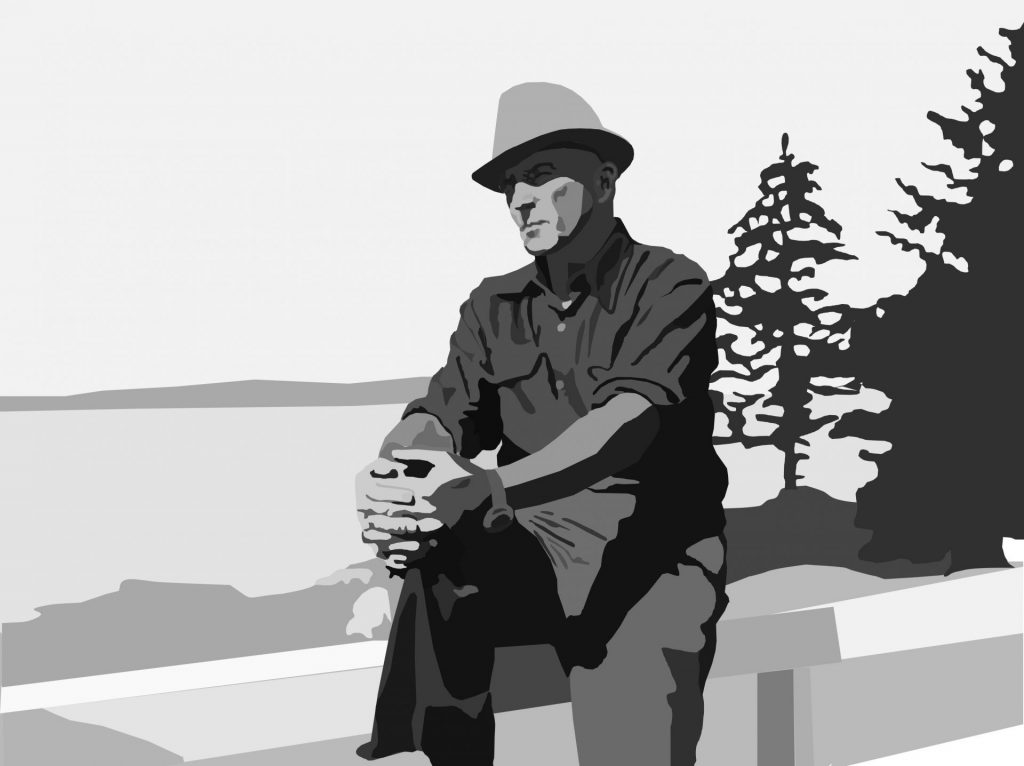
As the treasure hunters head to one of the coordinates which Guptill prescribed, the narrator explains that, while Fred Nolan is believed to have removed most of the ringbolt rocks from his property in an effort to confound rival treasure hunter Dan Blankenship, his son, Tom, believes some of the ringbolts might still be extant and in their original locations.
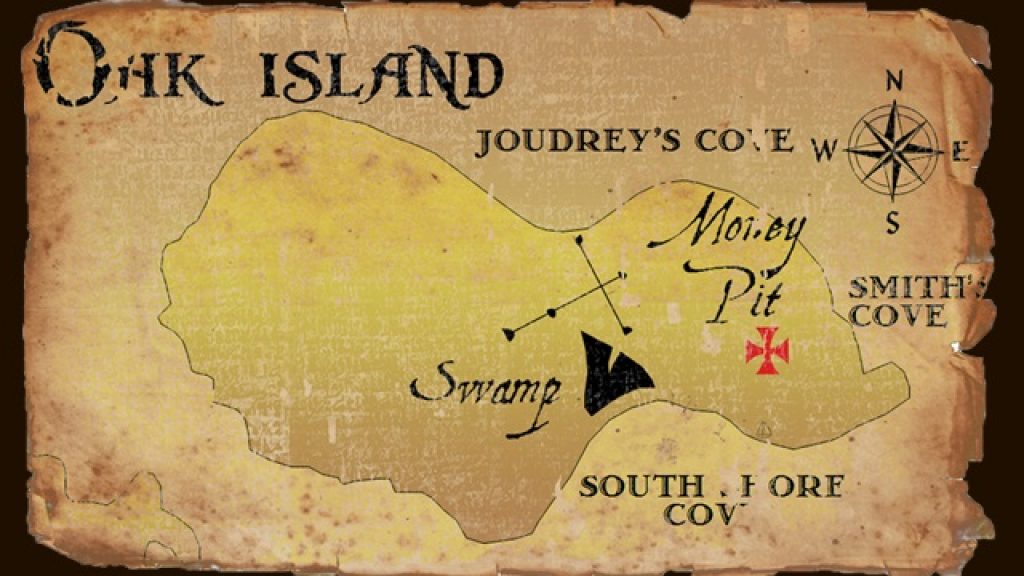
The treasure hunters arrive at Guptill’s ringbolt location, which lies at the edge of the Oak Island swamp, and scan it for metal artifacts. Although they fail to locate the ringbolt, they do find several large boulders and an iron artifact which Drayton identifies as a component of either an old cast iron stove or a cooking pot. Doug Crowell then discloses that when Fred Nolan removed one of the ringbolts he found, which was located just up the hill from their present location, he discovered parts of an old cast iron stove beneath it, which he suspected were components of a stove from an old ship. Drayton suggests that they show their newly-discovered artifact to blacksmithing expert Carmen Legge.
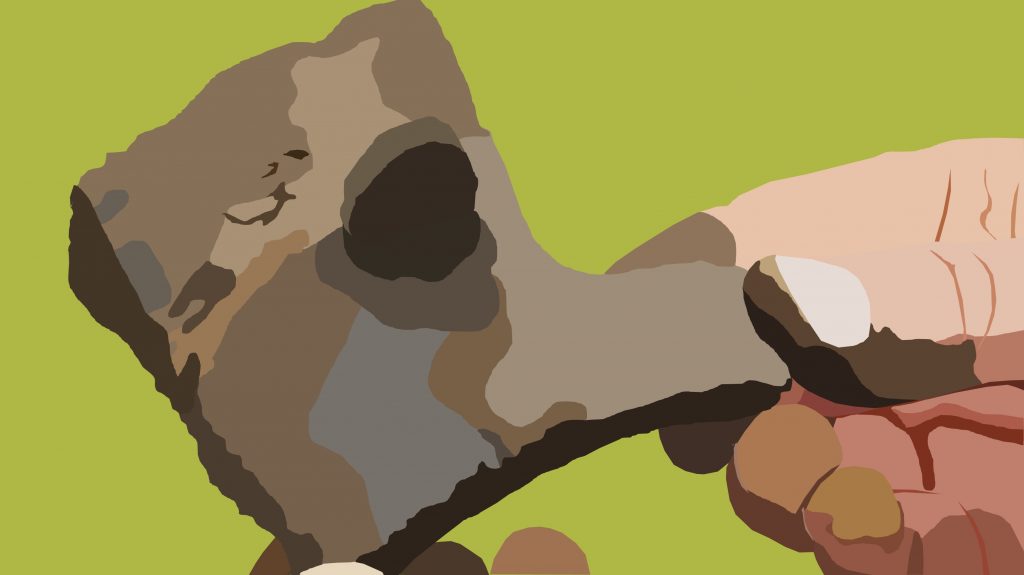
In the next scene, Alex Lagina, Jack Begley, and Peter Fornetti take Drayton’s suggestion and pay a visit to Carmen Legge at his forge at the Northville Farm Heritage Centre in Centreville, Nova Scotia. The blacksmithing expert examines the artifact found near the swamp and, similar to Drayton, identifies it as “the bottom part of a potbelly stove” made in the early 1700s.
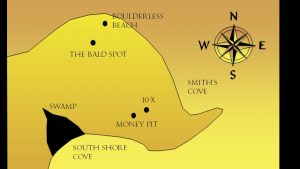 Later that day, Tony Sampson welcomes Alex Lagina and Dr. Ian Spooner aboard his motorboat and heads to the South Shore Cove, where the treasure hunters intend to conduct a sonar scan in search of what Spooner calls “paleo shorelines”, as well as any artifacts or manmade structures. The three men begin their scan close to the South Shore Cove and find little of interest, watching the real-time results of the sonar data on a screen as they slowly cruise along. They continue their scan further away from the shore and come across a 12-metre-deep anomaly off the Boulderless Beach which presents as two spikes on the screen. The treasure hunters speculate as to the nature of this anomaly and agree that it might be the remains of a wrecked ship. Alex Lagina and Tony Sampson agree to dive on the mystery object in the future.
Later that day, Tony Sampson welcomes Alex Lagina and Dr. Ian Spooner aboard his motorboat and heads to the South Shore Cove, where the treasure hunters intend to conduct a sonar scan in search of what Spooner calls “paleo shorelines”, as well as any artifacts or manmade structures. The three men begin their scan close to the South Shore Cove and find little of interest, watching the real-time results of the sonar data on a screen as they slowly cruise along. They continue their scan further away from the shore and come across a 12-metre-deep anomaly off the Boulderless Beach which presents as two spikes on the screen. The treasure hunters speculate as to the nature of this anomaly and agree that it might be the remains of a wrecked ship. Alex Lagina and Tony Sampson agree to dive on the mystery object in the future.
The three men head further out to sea and come across a second anomaly, which we later learn is eight feet wide and eight feet long, and which Dr. Spooner suggests might the remnants of an old wharf. “This feature on the south side of the island,” Alex Lagina explains in a later interview, “is a square-shaped anomaly that we think might be the remnants of an old wharf. This lines up with what the island used to look like before it was eroded, so if you’re going to build a wharf, that’s where and why you would have built it.”

When the sonar scan is complete, Alex Lagina, Tony Sampson, and Dr. Spooner return to the island and meet with their fellow treasure hunters outside the Oak Island Interpretive Centre. There, they inform their companions of their discoveries. Doug Crowell remarks that the second anomaly which the crew located resembles a wharf-like object that can be seen off the South Shore Cove in old aerial photographs of Oak Island. The treasure hunters agree that a manual examination of the anomalies is in order.
Analysis
The Stone Triangle
In this episode, several references were made to the stone triangle which once stood on Oak Island’s South Shore Cove. Recall that this mysterious landmark was an equilateral triangle composed of sixteen beach stones, each of them about the size of a man’s head, which lay at the high tide line on the eastern end of the South Shore Cove. The triangle, the sides of which measured ten feet, appeared to be pointing due north in the direction of the Money Pit. An arc of six stones girded its base, and a line of eight stones ran from its northern apex to a point on its base about four feet from its western vertex.
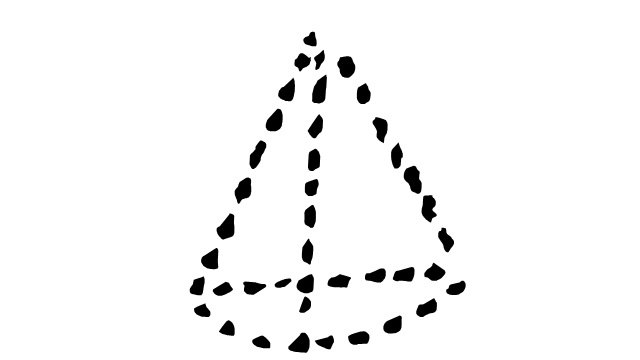
This mysterious feature was first discovered in June 1897 by Captain John Welling, the field manager of the Oak Island Treasure Company, only to be promptly forgotten. It was rediscovered in 1937, when Gilbert Hedden, while following the directions on the mysterious Wilkin’s Map, tasked his employee, Amos Nauss, with searching the underbrush on Oak Island’s southeastern end for anything out of the ordinary. In Nauss’ words, “Hedden gave me some idea that there was something down there at the beach that he wanted to find. So I explored around there with a hoe. I was clawing around and suddenly I hit one rock, then another and another, all in line with each other. So I decided there was something there, and I started clearing it and called Hedden over.”
Treasure hunter Robert Dunfield destroyed the stone triangle in 1965 while excavating the mysterious South Shore Cove Shaft, and its original location has been in dispute ever since.
Erin Helton’s Stone Triangle Theory

In this episode, GIS expert Erin Helton elaborated on the theory she presented in the previous episode, in which she prescribed geographic coordinates for the anchor points on Zena Halpern’s map of Oak Island. Her extended theory, which she presented in this episode, holds that the lead cross discovered by Rick Lagina and Gary Drayton on the shores of Smith’s Cove back in Season 5, Episode 10 was intended as a navigational tool with which, when used in conjunction with an accurate map of Oak Island on which the anchor points are marked, the prospective treasure hunter might locate the stone triangle on the South Shore Cove, and presumably thereafter, the northerly Money Pit to which the triangle pointed. Assuming that this theory is correct, the fact that the lead cross was found buried beneath Smith’s Cove suggests that a previous treasure hunter came to the island equipped with a knowledge of the Money Pit treasure and the tools necessary to locate it, only to discard or misplace one of those tools on the beach.

Erin Helton ought to be commended for the obvious effort and expertise that went into her theory’s formulation, and for the courage she displayed in presenting her ideas on TV. In this author’s opinion, however, there are several major problems with Helton’s theory, all of them due to the shakiness of three assumptions upon which the theory is founded: 1) that Zena Halpern’s map of Oak Island is a genuine treasure map; 2) that the anchor points which Helton identified in the previous episode were actually intended as landmarks; and 3) that the lead cross was indeed crafted for the purpose of serving as a navigational tool in conjunction with an accurate map of Oak Island. In order to assess the merit of her argument, we must first examine these assumptions.
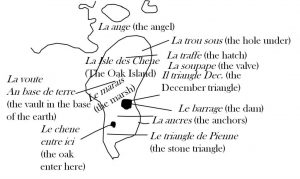 As I mentioned in my analysis of Season 8, Episode 5, Zena Halpern believed that her 1347 map of Oak Island was related to the Cremona Document, a collection of parchments purporting to chronicle a secret mission launched by the Knights Templar following their discovery of ancient scrolls beneath Jerusalem’s Temple Mount, which she received from a mysterious researcher named William Johnson. Halpern’s friend, Donald Ruh, on the other hand, contended that the Oak Island map was a fabrication of Johnson’s created as part of an elaborate plot to entrap one of his enemies. In that analysis, I argued that both the Cremona Document and the letter on which Ruh based his claim appear to be fraudulent, casting serious doubt upon the authenticity of Halpern’s map of Oak Island and, by extension, the legitimacy of Helton’s theory.
As I mentioned in my analysis of Season 8, Episode 5, Zena Halpern believed that her 1347 map of Oak Island was related to the Cremona Document, a collection of parchments purporting to chronicle a secret mission launched by the Knights Templar following their discovery of ancient scrolls beneath Jerusalem’s Temple Mount, which she received from a mysterious researcher named William Johnson. Halpern’s friend, Donald Ruh, on the other hand, contended that the Oak Island map was a fabrication of Johnson’s created as part of an elaborate plot to entrap one of his enemies. In that analysis, I argued that both the Cremona Document and the letter on which Ruh based his claim appear to be fraudulent, casting serious doubt upon the authenticity of Halpern’s map of Oak Island and, by extension, the legitimacy of Helton’s theory.

In Season 8, Episode 5, the Fellowship of the Dig examined the locations at which Helton contended the anchors alluded to on Halpern’s map would be found. At the southwestern anchor point, the treasure hunters found a white stone almost completely buried in the ground which proved to be entirely unremarkable save for a small pockmark on its exposed surface. The Fellowship then headed to the northeasterly anchor point, where they found an equally unremarkable stone, indistinguishable from the other rocks which littered the beach on which it lay save for a marking which reminded Alex Lagina of the ship carved on the Boat Stone, a mysterious artifact which features in Robert Markus’ Oak Island theory. The unexceptionality of the stones found at Helton’s anchor points further diminishes the credibility of the GIS expert’s theory.
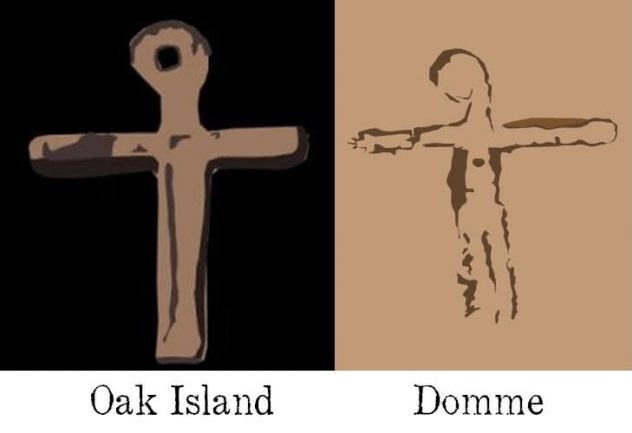
There have been several ideas put forth over the years as to the nature of the lead cross found at Smith’s Cove, the third article on which Helton’s theory rests. Ever since its discovery, attempts have been made to connect the object with a particular graffito it resembles, which was carved onto the wall of a prison in Domme, France, in 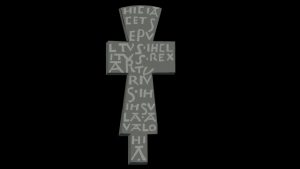 which Templar knights were once incarcerated; which several members of the Oak Island team visited back in Season 5, Episode 9. In Season 5, Episode 12, the narrator suggested that the lead cross might be a mortuary cross, a device used to ward off sickness in times of plague. Although it’s probably coincidental, it’s interesting to note that, according to legend, a lead mortuary cross was purportedly found in the grave of the legendary King Arthur and his Queen Guinevere in the 12th Century. This grave was found in the shadow of Glastonbury Tor, a hill associated with the legend of the Holy Grail, one of the supposed treasures of the Knights Templar. And in June 2019, Canadian military men, while engaging in a construction project near St. John, New Brunswick, unearthed a handful of lead crosses bearing striking resemblance to the artifact found at Smith’s Cove. Archaeologists determined that these artifacts were of 16th or 17th Century French origin, and may have had some sort of connection with the old French fur trading post Fort La Tour.
which Templar knights were once incarcerated; which several members of the Oak Island team visited back in Season 5, Episode 9. In Season 5, Episode 12, the narrator suggested that the lead cross might be a mortuary cross, a device used to ward off sickness in times of plague. Although it’s probably coincidental, it’s interesting to note that, according to legend, a lead mortuary cross was purportedly found in the grave of the legendary King Arthur and his Queen Guinevere in the 12th Century. This grave was found in the shadow of Glastonbury Tor, a hill associated with the legend of the Holy Grail, one of the supposed treasures of the Knights Templar. And in June 2019, Canadian military men, while engaging in a construction project near St. John, New Brunswick, unearthed a handful of lead crosses bearing striking resemblance to the artifact found at Smith’s Cove. Archaeologists determined that these artifacts were of 16th or 17th Century French origin, and may have had some sort of connection with the old French fur trading post Fort La Tour.
In the Season 6 premiere of ‘The Curse of Oak Island’, the cross from Smith’s Cove was subjected to a laser ablation test which indicated that the lead of which it is comprised was mined in a medieval quarry in southern France. If the cross was crafted shortly after the lead of which it is comprised was mined, and if the lead was indeed mined during the Middle Ages as the quarry’s age suggests, then the artifact was created before the development of the navigational technology which would be necessary to create of a map of Oak Island as accurate as that with which Helton’s theory contends the cross was intended to be used. In other words, the cross appears to be too old to have been created for the purpose of being used in conjunction with an accurate map of Oak Island, as Helton’s theory proposes.
Since the theory which Helton put forth in this episode appears to be founded upon groundless assumptions, the viewer would be justified in wondering why the Fellowship of the Dig, whose members are doubtless aware its flaws, would seriously consider it, as they appear to have done in this episode. The answer to this question, discounting Prometheus Entertainment’s obvious need to manufacture content for this season in light of the pandemic’s prohibitive effects on the treasure hunt, can perhaps be found in the words of Rick Lagina, who predicted in this episode that the “puzzle of Oak Island [will be really solved] by people looking at things outside the box.”
The Anomalies off the South Shore Cove
In this episode, Alex Lagina, Tony Sampson, and Dr. Ian Spooner conducted a sonar scan in the waters off Oak Island’s southern shores in order to determine what the island may have looked like in the 1600s and the 1200s, when sea levels were lower, and to locate any artifacts or artificial structures. During the scan, the crew came across a mysterious object which Sampson suggested might be part of a wrecked ship, as well as an 8-foot-square object resembling a wharf. The treasure hunters agree that they ought to dive on these anomalies in order to determine their nature.

The upcoming diving operation is not the first to be performed in the waters off Oak Island. In Season 1, Episode 2, Marty Lagina, Alex Lagina, and Tony Sampson dove on strange stones which Sampson previously discovered in the waters off Smith’s Cove. The divers discovered what appeared to be three rectangular stones covered in seaweed, each of them different sizes. The largest stone was the furthest away from the shore, the smallest stone was the closest to the shore, and all three lined up with similar stones on Smith’s Cove, and with the Money Pit area beyond.
In Season 3, Episode 8, Tony Sampson took Craig Tester, Alex Lagina, and Jack Begley, along with marine archaeologist Rod Peterson and side scan sonar experts Mike Roberts and Dave Delaney, on a boating excursion around Oak Island. While sonar scanning off the Boulderless Beach, Roberts and Delaney located what they suspected to be a shipwreck- an anomaly which they had discovered during a previous sonar scan, which is probably the same anomaly identified in this episode. They also found a perfect underwater triangle which appeared to point to same place on the South Shore Cove at which the stone triangle is believed to have lain. In Season 3, Episode 9, Marty Lagina, Alex Lagina, Tony Sampson, and marine archaeologist Rod Peterson dove on the triangular anomaly and found it to be a large stone covered in seaweed. Peterson noticed a marking on the stone’s surface which appeared to line up with the spot on Oak Island’s southern shore at which the stone triangle was once located, which he suggested might be manmade. During that dive, Sampson swam further than his companions and discovered another large triangular rock directly in line with the first rock and the site of the bygone stone triangle on the shore. The treasure hunters made no attempt to follow-up on the supposed shipwreck.
Thanks for Reading!
Thanks for reading! If you enjoyed this article and would like to help support this website, please check out our online bookshop:
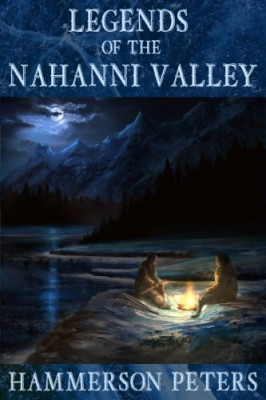
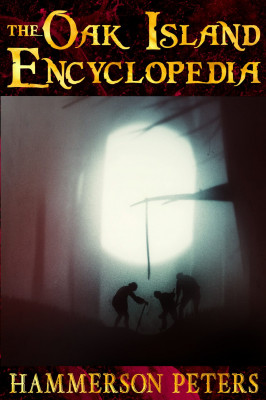
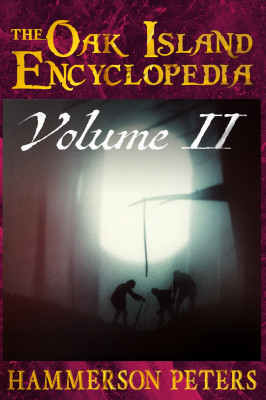
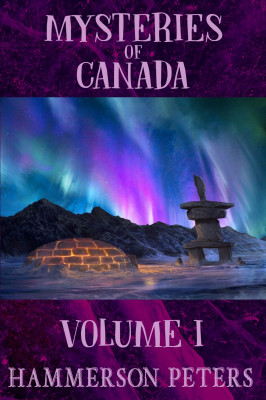
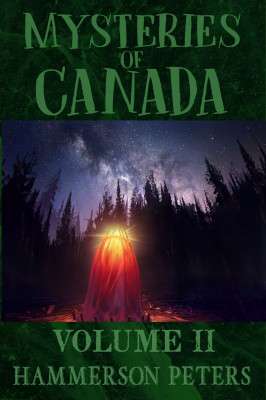
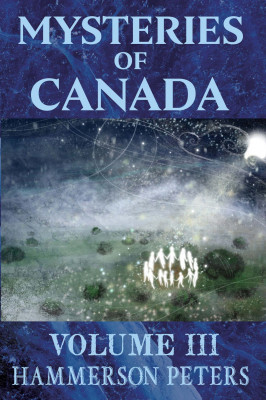
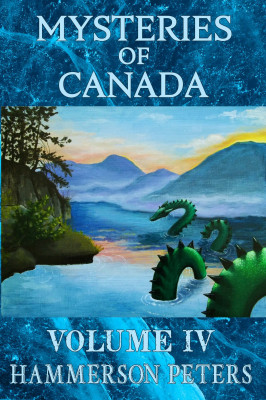


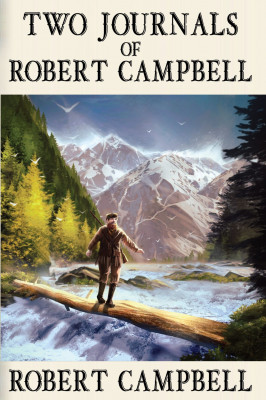
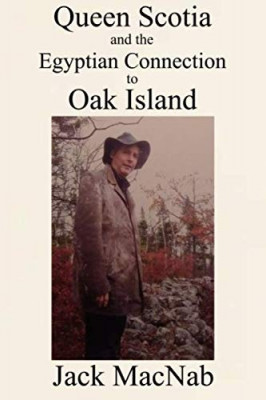
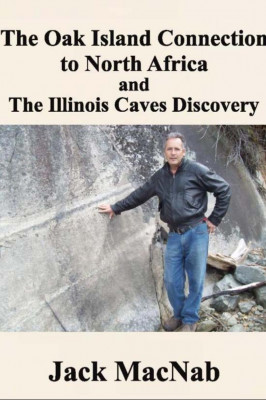
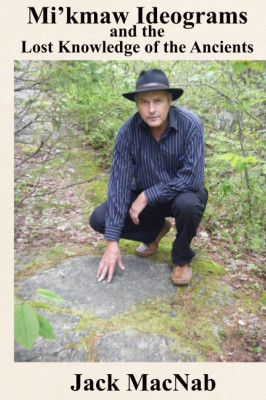
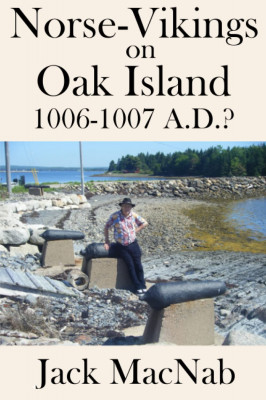

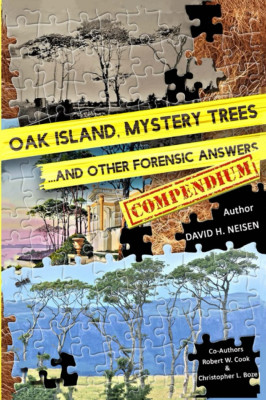
R J Daniels
The Erin Helton locations do not match the locations of the anchors on Zena’s map
The western Zena anchor is east of 15A and does not line up with Nolan’s cross.
The eastern Zena anchor is directly north of the money pit, west of the Helton location.
No wonder the two boulders found were so non- descript.
Linda Stanley
In regard to Erin Helton’s theory, is everyone aware that the actual “measured distance” of a FOOT during medieval times was different than the actual measured distance of a FOOT during the 1600-1700s which by the way is different to the actual measured distance of a FOOT today . . . even during the 1600-1700s the English and French used different FOOT measurements. Using the “wrong” measured FOOT distance for the number of FEET identified in the FORMULA text could significantly change the location of the anticipated target, especially as the required number of FEET increases during each subsequent calculation.